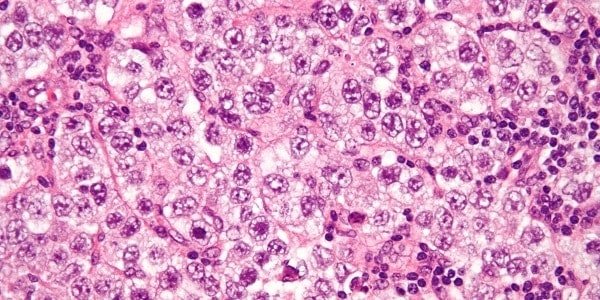Testicular cancer

Testicular cancer is a malignant tumor disease of the male gonads, the testicles, which synthesize male sex hormones and produce sperm.
The disease is rare, but according to various studies it is the most common form of cancer in men in Europe between the ages of 15 and 34.
What are the symptoms?
• Lump or enlargement in one or both testicles;
• Feeling of heaviness in the scrotum;
• Dull pain in the abdomen or groin;
• Sudden collection of fluid in the scrotum;
• Breast enlargement or tenderness;
The malignant growth usually forms in only one testicle.
When should you seek medical attention?
If you experience any pain, swelling, or feel lumps in your testicles or groin, especially if these signs and symptoms last for more than two weeks.< /p>
What are the causes?
In most cases, the cause of the onset of the disease is not established. Doctors are only aware of the fact that it happens when the healthy cells in the testicles change.
And normal cells grow and multiply in an organized way, thus ensuring the functioning of the body.
But sometimes abnormalities develop in some cells, which causes them to grow excessively, and already cancer cells continue to divide, even when no new cells are needed, thus disrupting the process of testicular regeneration.
>
The accumulating cells form a mass in the testicle.
In almost all cases of the disease, it originates in the germ or germ cells in the testicles.
What causes a mutation to develop in the DNA of these cells is not clear.
What are the risk factors?
• Cryptorchidism – the testicles form in the abdominal cavity during fetal development and usually descend into the scrotum after birth.
Men with an undescended testicle are at greater risk of developing testicular malignancy.
The risk persists even if the gonad is surgically moved into the scrotum. But in most cases of the disease, a previous history of retained testicle is not established.
• Abnormal testicular development – diseases or conditions that prevent normal testicular development, such as Kleifelter’s syndrome, may increase the likelihood of testicular malignancy.
• Family history – if family members have suffered from the disease, their risk is thought to be higher;
• Age – mostly affects teenagers and young men, especially those between the ages of 15 and 34. However, it is not excluded that a malignant formation in the testicle develops at any age.
• Race – the disease is more common in white men than in black men.
Testicular cancer treatment
Although the incidence has risen in recent years, more than 95% of cases can be cured.
The probability that the treatment will be successful increases if the disease is detected earlier. In such a case, the applied therapies will not be so aggressive and their side effects will not be so pronounced.
Most often, surgery, radiotherapy and/or chemotherapy are used.
Prevention
There is no way to prevent the disease. Some doctors recommend regular self-exams by palpating the testicles to identify anything unusual as early as possible.
Not all doctors fully agree with this practice, because sometimes unnecessarily they can traumatize the man.
If you do decide to self-examine your testicles, the best time is after a warm bath or shower. The warmth of the water relaxes the skin of the scrotum, making it easier to detect anything unusual.



